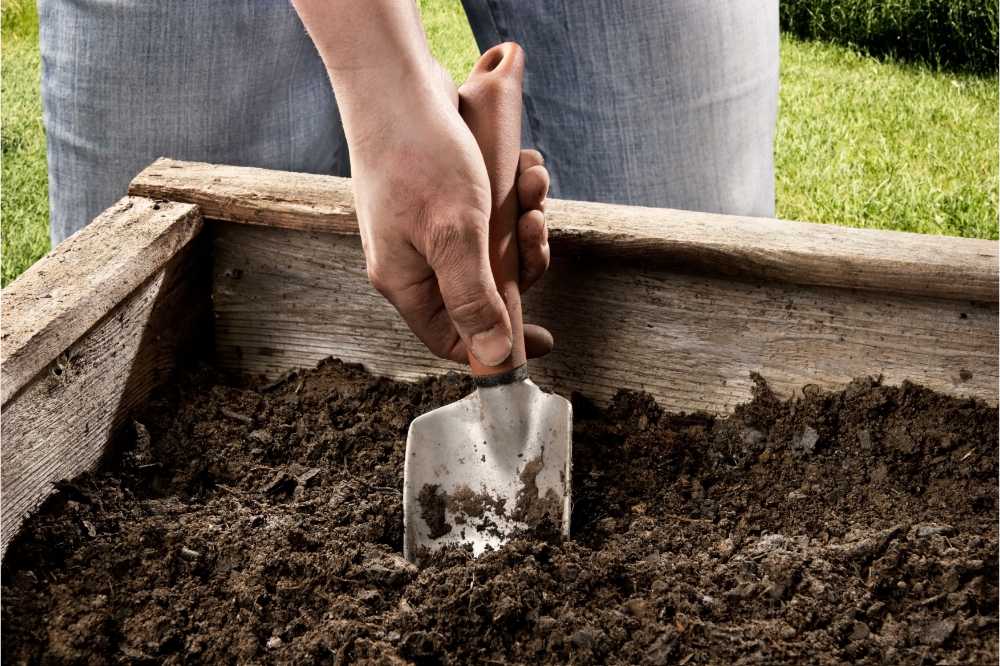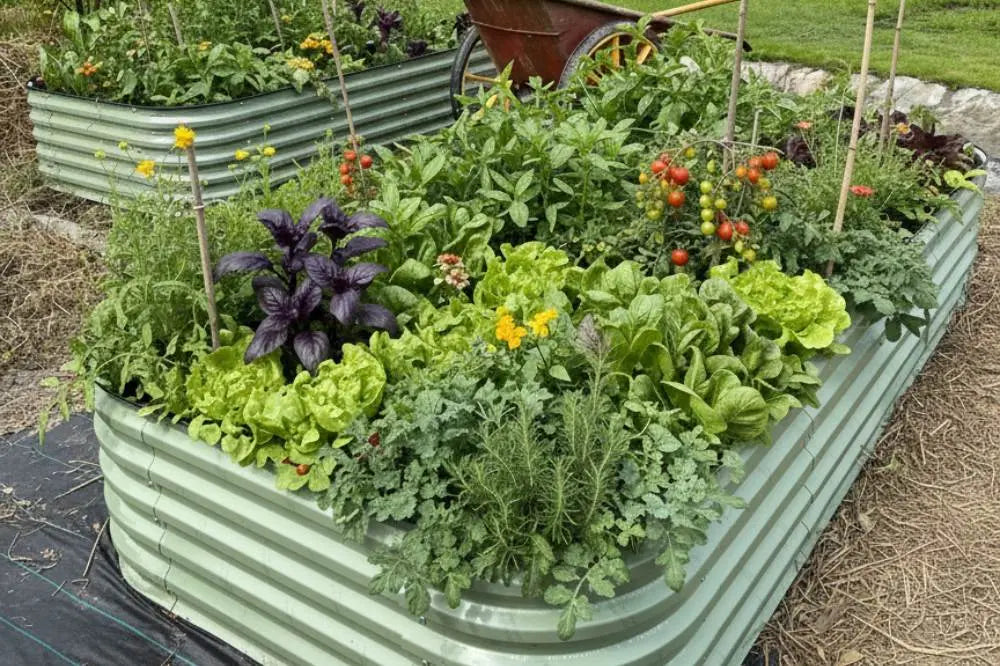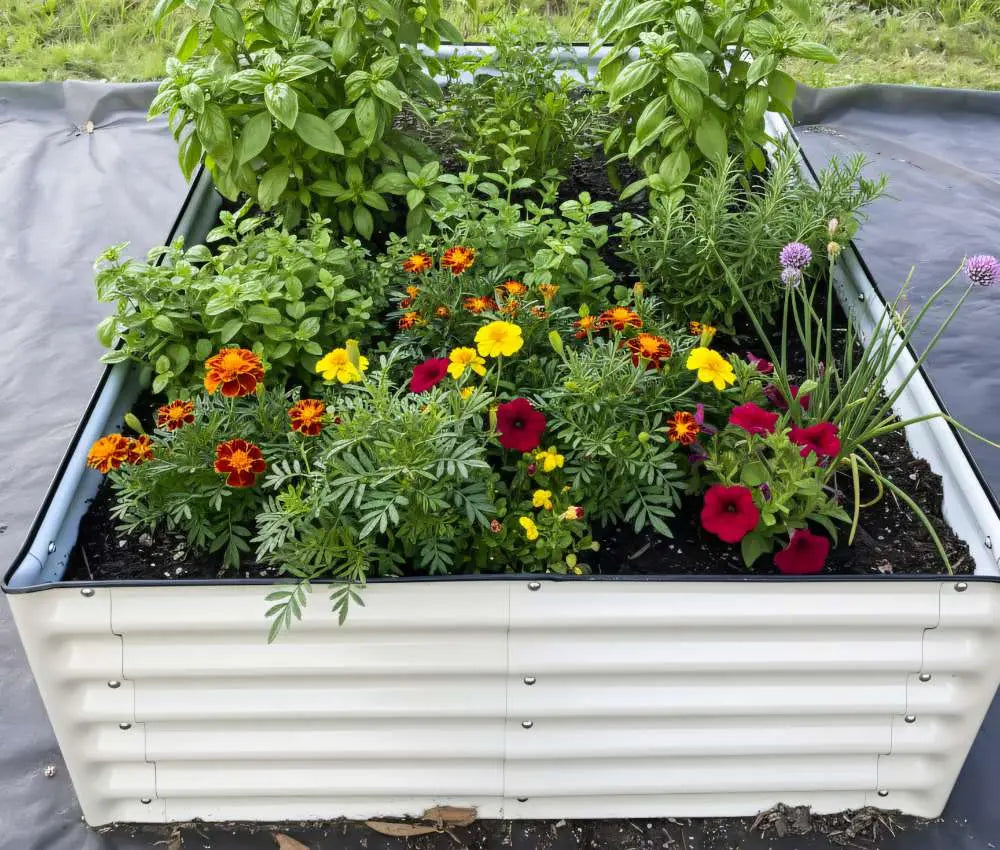How to Build a Raised Bed for Gardening
By Vidura Randeepa
Author bio: Vidura Randeepa is passionate about vegetable gardening and grows tons of flowers, herbs, and fruits. She is the writer of Life and Agri, where she writes articles on gardening (indoors), landscaping, horticulture, organic gardening, fertilizer, pests, and diseases.
Awonderful gardening project is building a raised garden bed. With these detailed instructions on how to construct a basic raised bed from scratch, we'll help you get going. No specialized DIY abilities needed! Learn how to clear the site, what sort of wood or material to use, how big a raised bed should be, and how to construct the bed. Then, we talk about how to mix soil for a raised bed!

Why Use Raised Garden Beds?
You have control over the soil quality where your plants are being produced when you use raised beds. Simply mounded soil or a contained bed of soil raised above the surrounding grade is what is meant by a raised garden bed. Making a deep, broad growing space is intended to promote the growth of plant roots.
Plants can be placed on raised beds at eye level for better pest problem observation. You may work your bed more thoroughly and without affecting the general contour when it is enclosed in a structure.
I also like that I don't have to stoop over to make the beds. Even on days when I might be tempted to just relax with a cold drink, that little bit of convenience makes it simpler to work in the garden.
Trust me, I have those days as well.
Do you reside in a region with dense clay like my red Atlanta clay, hardpack soil, fine-grained sand, or maybe your house is surrounded by concrete? You may have tested your soil and found lead or other toxins in your native soil.
By raising the garden surface, you can keep plant roots from sinking polluted soil and lift your plants above it. Raised beds make it so that there aren't any surface problems that should prevent you from planting.
You have control over the soil's health and drainage when your soil bed is elevated above the land around it.
So, anyone, anywhere can develop a fruitful raised bed garden, regardless of how poor the soil is at the outset.
Sincere to say, I also adore the way raised beds appear. They add a lot of aesthetic value to my property, in my opinion. I can't imagine not planting in raised beds given my options.
Raised Bed Size Considerations

Most likely, you've previously looked at dozens or perhaps hundreds of pictures of different gardens. You are aware of the significant variations in bed sizes and shapes when building a raised bed. I've also seen just about everything, including plants placed directly into garden soil bags. The guidelines I do suggest are as follows:
Height for building a raised bed
12 to 17 inches raised garden beds are preferable, while 11 inches metal flower bed can still function and be effective. The majority of feeder roots are found in the first 11", although the shoots get higher the deeper the roots go. Due to the weight and pressure of all that soil, going higher than 17" garden bed may eventually result in more structural problems. But it will leave the roots more space to extend like 32 inches galvanized raised beds.
Consider the crops you would like to plant (root vegetables which require more space, herbs which require less, etc.). Consider the base upon which you will be building as well. Go higher if the soil won't be able to erode out the bottom or go lower if the weight of the bed might affect it.
Give your plant's roots as much practical space to expand as you can. (If you listened to the audio from last week, you would know that the ideal seating height is 17 inches.)
Width for building a raised bed
Three feet can also be used, but four feet is ideal. Row spacing is more flexible at four feet, but more importantly, staying within that width will allow you to access the center of the bed with ease from either side. You shouldn't have to step into the bed to weed, plant, or do anything else because doing so will compact the soil and negatively impact drainage and general health.
Length for building a raised bed
Choose a length that works for you. 4' x 4' squares could be constructed. You may create rows of 4' x 20'. Your length is solely constrained by your budget and available area, as long as you stay within a four-foot maximum width.
Shape for building a raised bed cheap
As already said, you can construct squares, rectangles, Ts, circles, ovals, and other shapes. You're good to go as long as you can access every part of the bed from the edge while staying within the four-foot space.
Add Soil to the Raised Garden Bed

The fact that the container rests on the top of the soil is one of the best benefits of having raised garden beds for your veggies. This gives you the ability to manage the soil and additions to support the plants you are growing. To learn about soil type read this Well-drained Soil article about how to keep the soil moist and Types of Soil for Your Raised Garden Bed article.
- Select the right type of soil for the plants you want to grow.
- For the majority of uses, a recommended base mix consists of 60% topsoil, 30% compost, and 10% potting soil.
- Adjust the soil and amendment ratios to the requirements of the plants you choose.
- Add enough soil mixture to the bed to fill it. It will settle to some extent.
- To estimate how much soil is required to fill the container, use the formula LWD. It will take roughly 27 cubic feet of dirt to fill a raised garden bed that is 8 feet by 4 feet by 10 inches.
Here is an article about How Much Soil to Fill a 2x8 Raised Garden Bed.
Add Seeds or Plants
Fill the garden bed with soil mixture and sow seeds or plants there.
- Make sure they are planted at the right depth and at a sufficient distance apart to give them room to expand.
- Arrange the things such that taller plants won't shade out their shorter neighbors.
- Use tomato cages, plant stakes, or other supports as necessary to support them as they grow.
- If you want to help keep unwanted animals out of your garden, think about using bird netting.
- If there is little rainfall, water regularly.
- Once they are established and actively developing, plants only require around one inch of water per week.
More seeds information in How to Start Seeds - Easy Seed article.
What to Plant in Raised Beds
We suggest that beginning gardeners try their hand at growing a few of their favorite veggies in one raised bed. Ultimately, a good-sized garden can be created from four or five raised beds together. The depth of your soil, which is equal to the depth of your raised bed plus the depth of the topsoil you dug and loosened below ground, is the sole limitation on what you can grow.
How do you water raised beds
Checking the soil will help you determine when to water it. You want it to have a somewhat wet, wrung-out towel-like quality. Find the ideal balance for your soil because vegetables don't like it to be too dry or too wet. Watering in the morning will be more effective because the soil will have all day to dry up.
Hand watering
Many gardeners choose to water their raised beds by hand because they enjoy being in the garden and use this time to check on their plants, even if it can be time-consuming. In fact, the procedure might even be therapeutic for you. Because they can avoid hose issues like kinks and plant damage, some people prefer using a watering can. Watering cans, however, can be heavy, so you might need to make several trips back to your water supply. A good solution that will expedite the process and make it simple to water all the plants in your beds is a watering wand linked to a hose.
Automatic Irrigation
Soaker hoses or drip irrigation are wonderful solutions for individuals who don't have the time to water their raised beds on a daily basis. To consistently water all of your crops, soaker hoses can be placed throughout your beds. These hoses gently absorb water into the soil. Small emitters used in drip irrigation provide water directly to each plant's root zone at the ideal rate. You can set both settings to operate automatically by using a timer.


